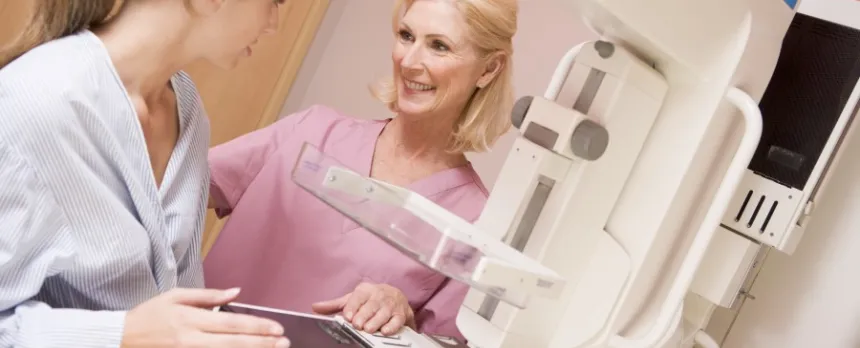Breast Health: Is 3D Mammography Right for Everyone?

Finding breast cancer at its earliest stage gives you the best chance for a cure. And mammography has long been the gold standard when it comes to screening and early detection of breast lumps long before they can be felt.
Three-dimensional (3D) mammography, or breast tomosynthesis, is a revolutionary tool in the fight against breast cancer with its ability to capture even more detailed breast images than traditional 2D mammograms. This is important because better imaging leads to earlier diagnosis and a better chance for a cure.
But which type of mammography is right for you?
How 3D Mammography Works
First, it helps to understand how 3D mammography works. 3D mammograms use the same X-ray technology as regular 2D mammograms. In both types of exams, the breast is compressed between two plates.
Traditional 2D mammograms take images only from the front and side, which may create images with overlapping breast tissue. 3D mammography, however, captures multiple "slices" of the breast from many different angles. A computer brings these image slices together creating a clearer 3D reconstruction of the breast.
Your radiologist can then view this 3D reconstruction one slice at a time, almost like turning the pages of a book. This makes it much easier for the doctor to see if there is anything to be concerned about.
Benefits of 3D Mammography
There are three main benefits of 3D mammography:
- Earlier detection - Better images enable earlier diagnosis.
- More reliable results - Clearer images make it easier to distinguish between harmless abnormalities and areas of concern.
- Fewer callbacks - Better imaging leads to fewer repeat mammograms.
Who Should Have a 3D Mammogram?
This technology is particularly effective for women with dense breast tissue. Dense breast tissue refers to the appearance of breast tissue on a mammogram. It's a normal and common finding, affecting about half of all women.
We know that dense breast tissue makes breast cancer screening more difficult and increases the risk of breast cancer, so technology that produces clearer images is an important tool in cancer detection in women with dense tissue.
2D mammography remains an effective screening tool for women who don't have dense breast tissue.
How Often Should You Have a Mammogram?
Talk to your doctor about when you should have your first mammogram as it may depend on your family history or other risk factors.
Different medical organizations have different recommendations about how often you should have a screening mammogram. At UMass Memorial Health, we follow the guidelines of the American College of Radiology, Society of Breast Imaging and American College of Surgeons, all of which recommend:
- Having your first mammogram at age 40
- Having annual mammograms thereafter
If you are at higher risk for having breast cancer, these recommendations may be different, so we encourage you to talk to your doctor to get the best answers for your individual situation.
It's also important to know that UMass Memorial offers both 2D and 3D mammography. In total, our system conveniently offers mammography services in 15 different locations!
Guest Blogger: Gopal Vijayaraghavan, MD, Breast Imaging, UMass Memorial Health
Note: The content of this blog is for informational purposes only. It is not intended for use as diagnosis or treatment of a health problem or as a substitute for the professional consultation of a physician or qualified health care provider. If you have specific questions or concerns regarding a health or medical condition, contact your physician or a licensed health care professional.




